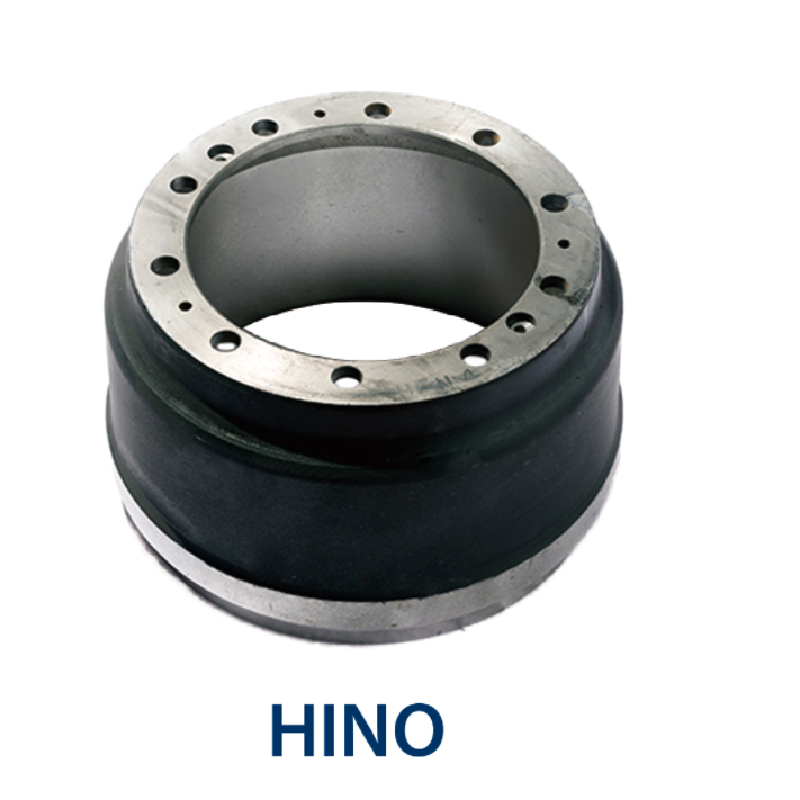Nov . 14, 2024 14:42 Back to list
brake drums vs pads
Brake Drums vs. Brake Pads Understanding the Key Differences
When it comes to the braking systems of vehicles, two critical components often come to mind brake drums and brake pads. While they serve the same fundamental purpose of slowing down or stopping the vehicle, they operate in entirely different ways and are suited for different types of braking systems. Understanding the distinctions between these two components is essential for vehicle maintenance and performance.
The Basics of Brake Drums
Brake drums are typically found in drum brake systems, which are commonly used on the rear wheels of many vehicles. The primary function of a brake drum is to provide a surface against which brake shoes press to create friction. When the driver presses the brake pedal, hydraulic force pushes the brake shoes outward against the inner surface of the drum. This generates friction, which helps to slow down the rotation of the wheel.
One of the standout features of drum brakes is their design. The enclosed drum housing helps protect against dirt and debris, which can extend the life of the braking components. Additionally, drum brakes can generate a significant amount of stopping power, making them suitable for lighter vehicles and applications where high performance is not necessary.
The Basics of Brake Pads
On the other hand, brake pads are an essential part of disc brake systems, which are prevalent on the front wheels of most modern vehicles and increasingly on the rear wheels as well. Unlike drum brakes, disc brakes consist of a metal rotor that spins with the wheel, and the brake pads are mounted on either side of the rotor. When the driver applies the brakes, the brake caliper squeezes the pads against the rotor, creating the necessary friction to slow down the vehicle.
Disc brakes are known for their superior heat dissipation compared to drum brakes. When brakes are engaged, they generate substantial heat, and disc brakes are designed to release that heat more effectively, reducing the risk of brake fade, which can occur when the brakes overheat. This feature makes disc brakes especially advantageous in high-performance situations, such as in sports cars or vehicles subjected to heavy braking.
brake drums vs pads

Key Differences
1. Design and Functionality The most evident difference between brake drums and brake pads lies in their design and the mechanism by which they operate. Drum brakes feature a cylindrical design that encloses the braking force, while disc brakes rely on the flat surface of a rotor with pads pressing against it.
2. Heat Dissipation As mentioned earlier, disc brakes are better at dissipating heat compared to drum brakes. This makes disc brakes more efficient and less prone to performance degradation under extreme conditions.
3. Maintenance Drum brakes can be more challenging to service than disc brakes. Accessing the brake shoes inside a drum often requires removing the entire drum, whereas brake pads can typically be replaced by removing the caliper and sliding the old pads out.
4. Performance In general, disc brakes provide better performance, particularly in terms of stopping power, response time, and longevity under heavy use. This makes them the preferred choice for modern vehicles, especially those designed for high speeds or heavy loads.
5. Cost Drum brakes are generally less expensive to manufacture and replace than disc brakes. However, due to their superior performance and modern engineering, disc brakes are becoming more prevalent in newer vehicles.
Conclusion
In conclusion, both brake drums and brake pads play crucial roles in a vehicle's braking system, each with its advantages and disadvantages. Understanding these differences can help vehicle owners make informed decisions regarding maintenance and upgrades. While drum brakes are still effective in certain applications, the trend toward disc brakes continues to grow, driven by the demand for better performance and reliability. Regardless of the system in use, keeping these components in good condition is essential to ensure safe driving and optimal vehicle performance.
-
Durable Brake Drum MAZ for Heavy Duty Trucks | High Performance
NewsAug.26,2025
-
FUWA: Premium Quality, Reliable Performance & Innovative Solutions
NewsAug.25,2025
-
Liza Brake Drum: Superior Quality & Performance for Safe Driving
NewsAug.24,2025
-
Iveco Brake Drum | Premium OE Quality for Daily & Eurocargo
NewsAug.22,2025
-
Your Brake Drum Man: Quality & Performance Parts
NewsAug.21,2025
-
Explore Japan: Ultimate Travel Guide & Authentic Experiences
NewsAug.19,2025
